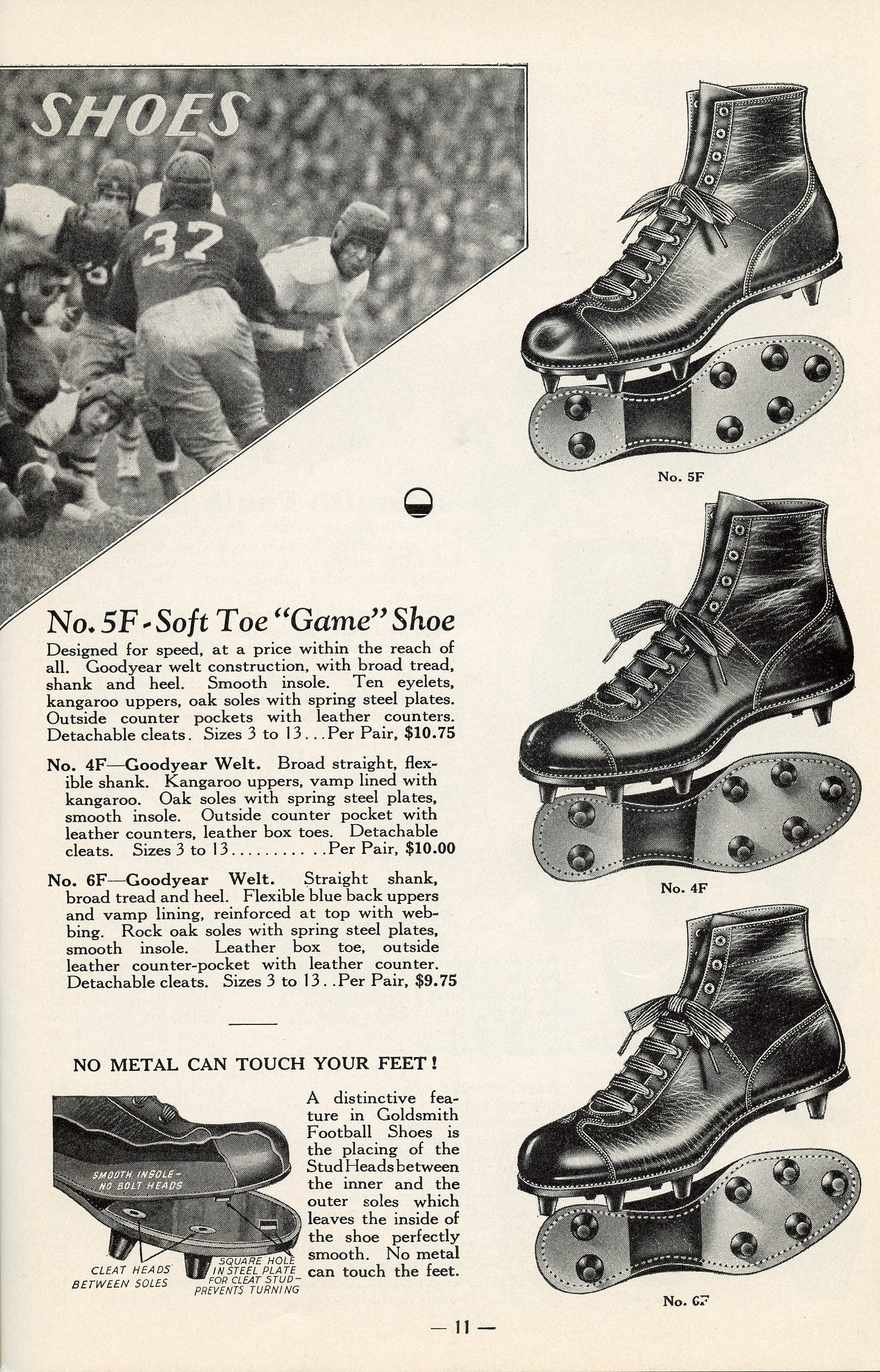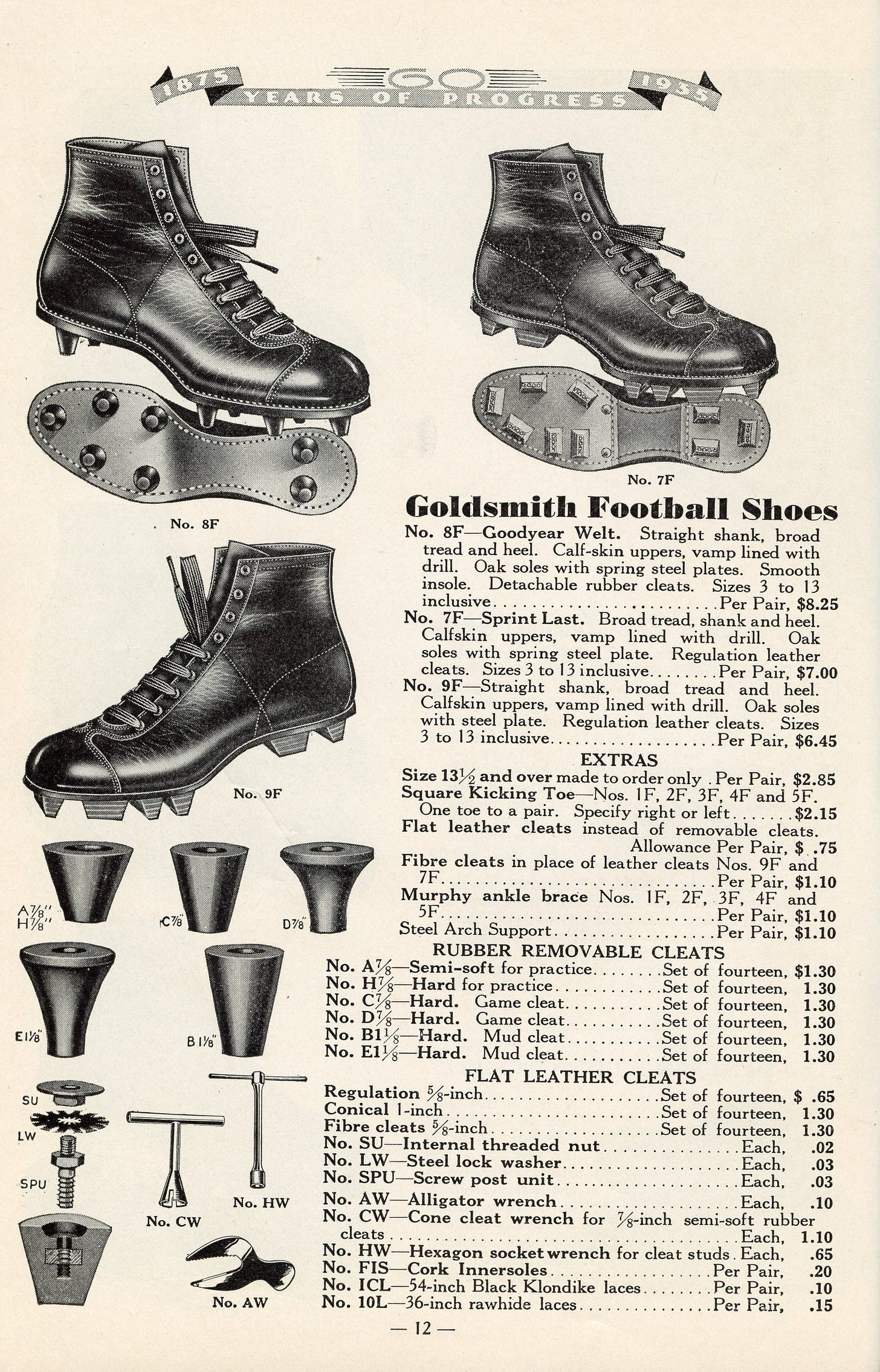Today's Tidbit... 1935 GoldSmith Sports Equipment Shoes
This is the third of seven articles in a series covering the 1935-36 Fall & Winter GoldSmith Athletic Equipment catalog. Preceding each section of the catalog is a one-page cartoon about the history of that type of equipment, in today's case, football pants.
Click the appropriate link for other stories in the series:
Consulting Staff | Footballs | Shoes | Pants | Jerseys | Helmets | Shoulder Pads | Miscellaneous
The cartoon introducing the catalog's shoe section is interesting because it focuses on the shoe's use as an implement for kicking the football. By 1935, only one or none of the 22 shoes worn by each team were used to kick the ball on a given play, so maybe they did not consider shoes used for running and blocking to be as interesting as their square-toed cousins. Sure, it was fun watching players hurriedly change from a standard shoe to a kicking shoe between third and fourth down or following a touchdown, and Princeton's J. Triplett Haxall kicked a 65-yard field goal following a fair catch in 1882, but most football players never kicked the ball. So, despite the cartoon’s kicking focus, the three other pages in the section primarily dealt with plain old football shoes.
Speaking of plain, like Ford automobiles sold before 1926, football players in 1935 could buy shoes in any color they wanted as long as they were black. Other colors were not offered despite the shoe uppers being made of yellow-back kangaroo leather.
Page 10 included an interesting tip near the bottom suggesting that players remove two cleats and replace them with short stove bolts when playing in wet conditions to reduce mud clumping between the cleats.
Page 11 shows more of the same at lower prices and indicates that GoldSmith used flat stud heads between the inner and outer soles to avoid discomfort from the shoe.
Things get interesting again on Page 12. Like the models on previous pages, Model 8F has detachable cleats, while Models 7F and 9F have old-style, laminated leather cleats. John Riddell introduced detachable cleats in the 1920s to eliminate the need for cobblers to replace leather cleats, an inconvenient, slow, and expensive process. Still, even his invention had a shortcoming. The replacement cleats shown on Page 12 are female cleats that screw onto posts that stick out from the shoe sole. Their design caused problems when cleats broke or fell off, exposing the posts, which sometimes lacerated other players. Shoe manufacturers switched to male cleats before molded cleats eliminated the need for replacement cleats.
A final note about the shoes shown in the catalog is that all are high-top in style. Oxford or low-cut football shoes appeared two years later and gradually became far more popular than the high-top versions.
Football Archaeology is reader-supported. Click here to buy one of my books or otherwise support the site.






A quick Google search didn't find if you'd addressed the phrase "toe meets leather" as depicted in the cartoon in today's article. Newspapers.com is currently inaccessible from Wikipedia, but I was still able to find the phrase in a 1911 Delaware County Daily Times (11/28/1911, p. 4). Is that a phrase you've searched for?
Once again a great piece of history through the ads of antiquity! Nice jobTim!
s it a bad thing if I said I have a pair of those that I wear out for a night on the town?